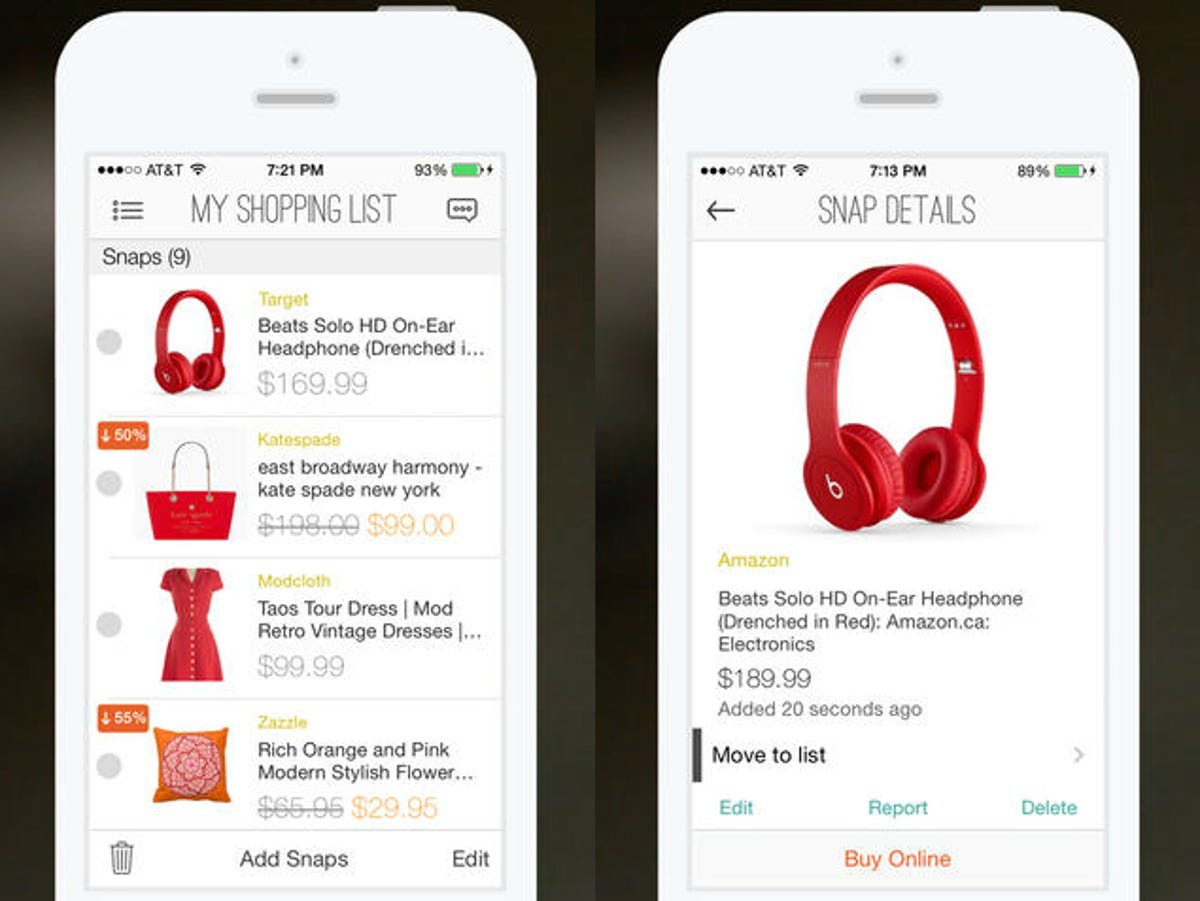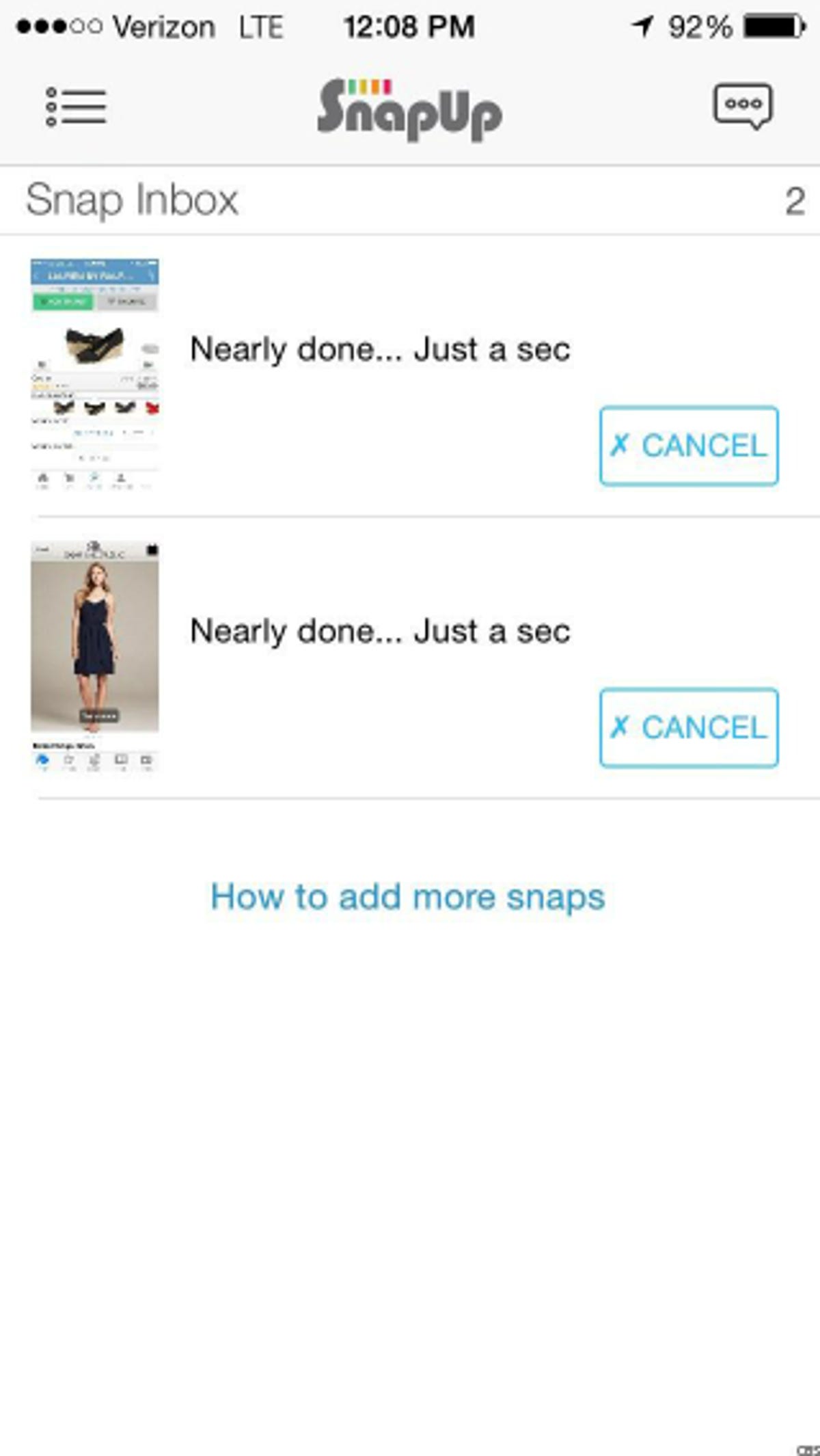
SnapUp
The creators behind SnapUp, an app that turns mobile screenshots into product wish lists, thinks it can help shoppers stay organized and find deals in the face of shopping-app overload.
The iOS app uses machine learning to read screenshots of product pages from any app or mobile site. It’s akin to using a bookmarklet or browser extension on a Web browser, but it’s designed for a mobile device, according to CEO Shan Mehta.
The company announced Tuesday that it raised $600,000 in seed funding from a slew of angel investors, including Facebook, StumbleUpon, Match.com, and Yahoo executives, to get the app off the ground. The app launched today in Apple’s App Store.


Screenshot by Shara Tibken/CNET
“Bringing this experience to mobile puts us ahead of everybody else because you can shop wherever you want,” he said. “You don’t have to do everything inside of our app.”
While mobile shopping is still a small portion of the overall e-commerce pie, the amount mobile traffic and sales have grown leaps and bounds in recent years. By the third quarter of last year, mobile commerce spending reached $5.8 billion, a 26 percent increase from the previous year, according to ComScore. SnapUp is betting even more consumers will make the switch to mobile shopping — and they’ll need help tracking all the things they want to buy.
Price tracking and bookmarking apps typically use algorithms to scrape information from sites, according to Mehta. Since each site has a different layout, multiple algorithms have to be written. This makes it harder for these apps to be accurate all the time. In contrast, SnapUp uses technology called computer vision machine learning to mimic the way a human reads and processes information on a product page.
“It’s made for a human being so let’s take that approach,” he said about online product pages. In order to achieve that, Mehta had to assemble a team of MIT academics who specialized in machine learning, as well as hackers.
The app works like this: any time you take screenshot with your iPhone, SnapUp will analyze the image saved to your Camera Roll to see if it’s a product. If it’s a product, the app automatically uploads the product’s image, relevant pricing information, and a link to the retailer’s site to a main wish list. The app will then send you a notification when the price of a product changes. You can also organize the products into multiple wish lists.
Related stories
- Twitter ‘Buy now’ button pops up on mobile
- IBM app marries augmented reality, comparison shopping
- Amazon Dash takes online shopping away from the computer
Mehta is confident there’s enough interest for a bookmarking app, particularly one that utilizes a function most smartphone owners already know how to use.
Currently SnapUp makes money from affiliate link programs (they get paid when a user buys something through the links saved in the app), but it hopes to expand and eventually cover the entire checkout process and even mobile payments. But that is likely years away.
Mehta said SnapUp is taking a slow approach to gain consumers’ trust. It’s staying away from any social sharing functions that may annoy shoppers because Mehta sees the app as a utility tool, not a social shopping network.
“Look at Evernote,” he said, referring to the now popular cloud storage app. “It took years for people to understand it. We feel like that’s a great timeline for us.”



